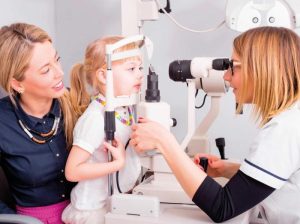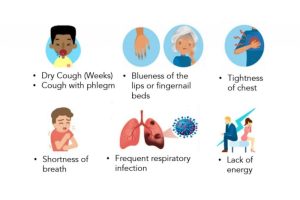
Embark on a journey through the realm of childhood fevers as we uncover the common causes and treatments that parents need to be aware of. This informative overview will shed light on the various factors contributing to fevers in children, offering a comprehensive understanding of this prevalent health concern.
In the following paragraphs, we will delve deeper into the specifics of childhood fevers, from identifying key triggers to discussing effective treatment options.
Common Causes of Childhood Fevers
Fevers in children can be caused by various factors, including viral infections, bacterial infections, inflammatory conditions, environmental factors, teething, immunizations, and certain medications.
Viral Infections
Viral infections are one of the most common causes of fevers in children. Examples include the flu, common cold, and viral gastroenteritis. These infections often lead to a fever as the body’s immune system responds to the invading virus.
Bacterial Infections
Bacterial infections such as strep throat, urinary tract infections, and pneumonia can also cause fevers in children. Bacterial fevers are often accompanied by other symptoms like chills, body aches, and fatigue.
Inflammatory Conditions
Inflammatory conditions like juvenile rheumatoid arthritis or Kawasaki disease can trigger fevers in children. These conditions cause inflammation in the body, leading to an elevated body temperature.
Environmental Factors
Hot weather can also contribute to fevers in children, especially if they are exposed to high temperatures for prolonged periods. Dehydration and heat exhaustion can lead to heat-related fevers in children.
Teething
Teething is a common cause of low-grade fevers in infants and toddlers. The process of new teeth breaking through the gums can sometimes result in a slight increase in body temperature.
Immunizations
Certain vaccines can cause mild fevers in children as a normal immune response to the vaccine. This fever is usually low-grade and does not last long. It is a sign that the body is building immunity to the specific disease.
Certain Medications
Some medications, such as antibiotics or antihistamines, can also cause fevers in children as a side effect. It is essential to follow the prescribed dosage and consult a healthcare provider if fever persists or worsens.
Treatments for Childhood Fevers

Fevers in children can be effectively managed with various treatment options. It is important for parents to know how to alleviate their child’s discomfort and when to seek medical help.Acetaminophen and ibuprofen are common fever-reducing medications suitable for children. These medications help reduce fever and relieve pain, making the child feel more comfortable.
It is essential to follow the recommended dosage based on the child’s age and weight to avoid any adverse effects.
Importance of Hydration and Rest
Maintaining hydration is crucial when a child has a fever. Encourage your child to drink plenty of fluids such as water, clear broth, or electrolyte solutions to prevent dehydration. Rest is also vital as it allows the body to focus on fighting off the infection causing the fever.
When to Seek Medical Attention
If your child’s fever is accompanied by other concerning symptoms such as difficulty breathing, persistent vomiting, severe headache, or a stiff neck, it is essential to seek medical attention promptly. Additionally, if the fever does not improve with fever-reducing medications or lasts for more than a few days, consult a healthcare provider.
Parents should also monitor their child’s temperature and overall condition closely and contact a doctor if they have any concerns.
Child Health
Regular pediatric check-ups are crucial for monitoring a child’s health and development. These visits allow healthcare providers to track growth, address any concerns early on, and provide necessary screenings and vaccinations to keep children healthy.
Importance of Regular Pediatric Check-ups
Regular pediatric check-ups play a vital role in ensuring the overall well-being of children. During these visits, healthcare providers assess physical, cognitive, and emotional development, identify any potential health issues, and offer guidance on nutrition, safety, and behavior. Monitoring a child’s growth and development through routine check-ups can help detect any abnormalities or delays early, allowing for timely intervention and treatment.
- Regular check-ups enable healthcare providers to track growth, development, and milestones.
- Early detection of health issues can lead to prompt treatment and better outcomes.
- Healthcare providers can offer guidance on nutrition, safety, and behavioral concerns.
- Vaccinations can be administered according to the recommended schedule to protect children from preventable diseases.
Maintaining a Healthy Lifestyle for Children
In addition to regular check-ups, maintaining a healthy lifestyle is essential for children’s overall well-being. This includes promoting balanced nutrition, encouraging physical activity, ensuring adequate sleep, and limiting screen time. By establishing healthy habits early on, parents can help children develop a strong foundation for a lifetime of good health.
- Provide a variety of nutritious foods to support growth and development.
- Encourage regular physical activity to promote cardiovascular health and maintain a healthy weight.
- Ensure children get enough sleep to support growth, immune function, and overall well-being.
- Limit screen time and encourage outdoor play to promote social skills and physical activity.
Significance of Vaccinations in Preventing Common Childhood Illnesses
Vaccinations are a crucial component of childhood health and play a significant role in preventing common childhood illnesses. By immunizing children against diseases such as measles, mumps, rubella, polio, and influenza, vaccinations help protect individuals and communities from outbreaks. Following the recommended vaccination schedule is essential to ensure children are fully protected from preventable diseases.
- Vaccinations build immunity against infectious diseases and prevent the spread of illnesses.
- Herd immunity, achieved through widespread vaccination, protects vulnerable populations who cannot be vaccinated.
- Following the recommended vaccination schedule is essential for optimal protection against preventable diseases.
- Vaccinations have significantly reduced the incidence of serious childhood illnesses and their complications.
Last Word
In conclusion, the discussion on common causes and treatments for childhood fevers underscores the importance of proactive healthcare measures when dealing with febrile episodes in young ones. By staying informed and prepared, parents can navigate these situations with confidence and ensure the well-being of their children.
Quick FAQs
What are some common causes of childhood fevers?
Common causes include viral infections, bacterial infections, inflammatory conditions, teething, immunizations, and certain medications.
What are suitable fever-reducing medications for children?
Acetaminophen and ibuprofen are commonly used fever-reducing medications for children.
When should parents seek medical attention for a child’s fever?
Medical attention is necessary if the child has a high fever, is lethargic, has difficulty breathing, or shows other concerning symptoms. Parents should seek medical help promptly in such cases.
Why are regular pediatric check-ups important for children?
Regular check-ups help monitor a child’s health and development, allowing early detection of any potential issues and ensuring timely interventions.
How do vaccinations help in preventing childhood illnesses?
Vaccinations play a crucial role in protecting children from common illnesses by building immunity against specific diseases, reducing the risk of infection and transmission.







